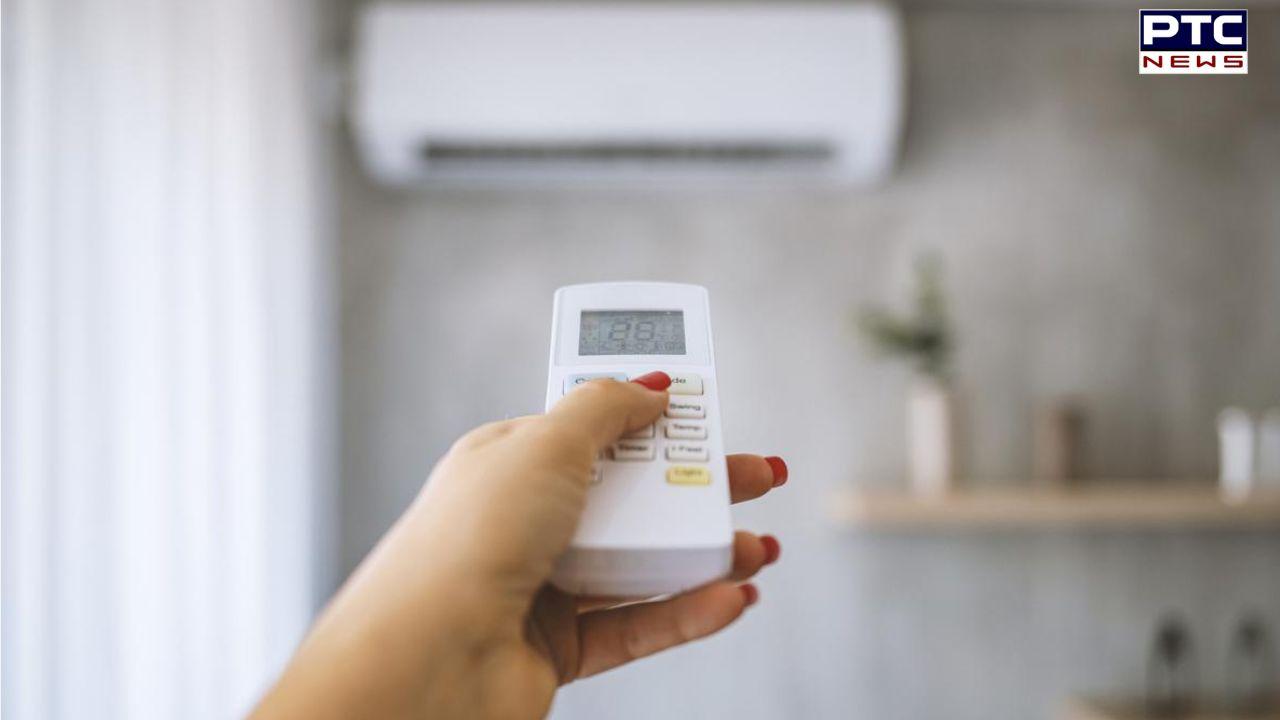

AC temperature settings between 20°C and 28°C: Why is govt introducing this rule?
PTC Web Desk: As India faces rising power consumption during the intense summer months, the Central Government is preparing to introduce a new regulatory framework mandating that all new air conditioners (ACs) be operable only within a standardised temperature range of 20°C to 28°C. This move, spearheaded by the Ministry of Power, is aimed at reducing electricity demand, easing pressure on the national power grid, and lowering household energy bills.
Union Power Minister Manohar Lal Khattar has emphasised that the regulation will apply across residential and commercial sectors—including offices, shopping malls, hotels, and cinemas—where ACs are often operated at the lowest temperature settings, such as 16°C or 18°C. Once implemented, users will no longer be able to set their ACs below 20°C.
Why is govt introducing this rule?
India’s peak power demand has surged dramatically, with a record 241 GW being registered in a single day in June. Projections suggest that this could climb as high as 270 GW during the hottest months. AC usage is a significant driver of this spike, especially when operated at lower temperatures.
According to government estimates, each 1°C increase in the AC’s set temperature results in approximately 6% energy savings. By capping the minimum temperature at 20°C, the authorities aim to reduce energy consumption, minimise pressure on the grid, lower carbon emissions, and deliver cost savings to consumers.
What are anticipated benefits?
The move is expected to bring substantial economic and environmental advantages:
Energy Savings: A study by the University of California suggests that standardizing AC temperature settings could reduce India’s peak electricity demand by 60 GW by 2035. This would translate to Rs 7.5 lakh crore in savings on electricity generation and grid infrastructure investments.
Reduced Power Outages: Lower energy consumption will alleviate stress on the grid, reducing the risk of power cuts during heatwaves.
Environmental Gains: The initiative is also expected to curb carbon emissions, aligning with India’s broader climate goals.
When will regulation come into effect?
Although the government has not announced a specific implementation date, Khattar stated that the rollout would happen “very soon.” The Ministry of Power is currently working with AC manufacturers to finalise technical specifications and compliance protocols. Once the new rule is notified, all newly manufactured ACs will be required to conform to the mandated temperature range.
Will older AC units be affected?
It remains unclear whether the regulation will be applied retroactively to existing air conditioners. However, going forward, new ACs will be engineered in such a way that they cannot cool below 20°C. For older units, compliance might involve software updates or hardware modifications, though these details have not yet been confirmed.
Will the rule extend to vehicle air conditioners?
Yes, the regulation will also cover automotive AC systems. This is intended to limit energy and fuel consumption in vehicles by preventing excessively low cooling settings. The Society of Indian Automobile Manufacturers (SIAM) has confirmed that it is working on implementing standard guidelines in coordination with government agencies.
How is industry reacting?
The response has been mixed. Environmentalists and energy analysts have welcomed the move, citing its potential to reduce emissions and promote sustainable energy use. However, some consumers, particularly in North India, have expressed concerns, arguing that a 20°C minimum might not provide adequate relief during extreme heat, where outdoor temperatures often exceed 45°C.
How do global standards compare?
Several countries have already implemented similar standards for air conditioning. For instance: In Italy and Japan, public buildings are required to maintain minimum temperatures of 23°C, with an upper limit not exceeding 27°C.
These measures are part of broader national strategies to cut energy use and combat climate change.
What are the current guidelines in India?
As of now, there is no legally binding rule that mandates a minimum temperature setting for ACs in India. The Bureau of Energy Efficiency (BEE) has advised setting ACs at 24°C, but this remains a recommendation, not an obligation.
- With inputs from agencies
